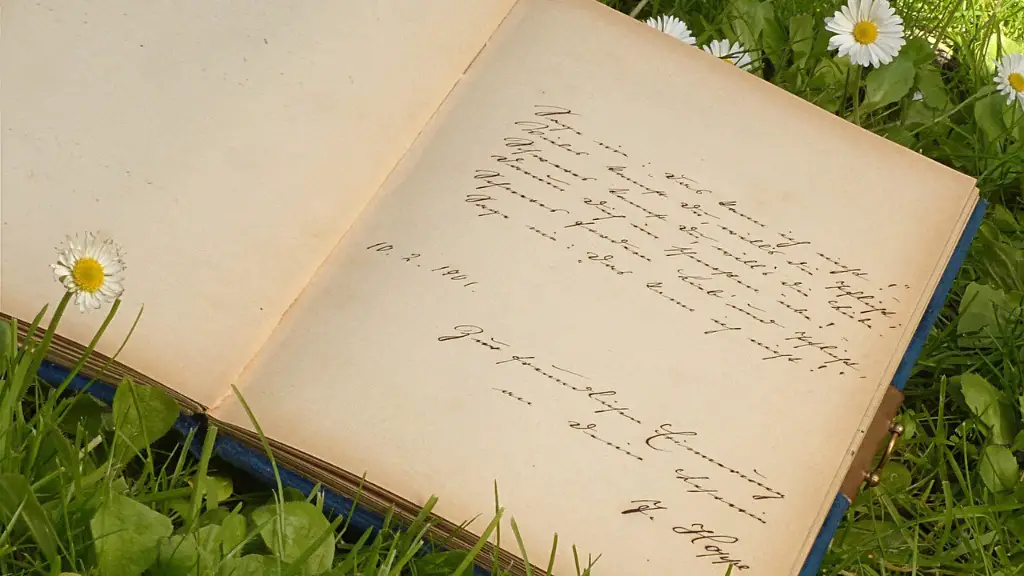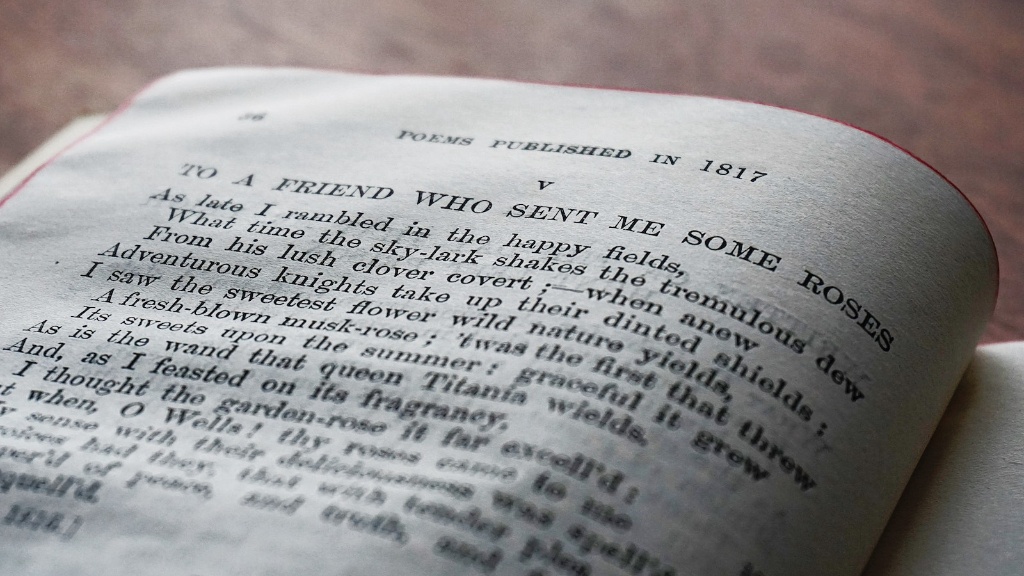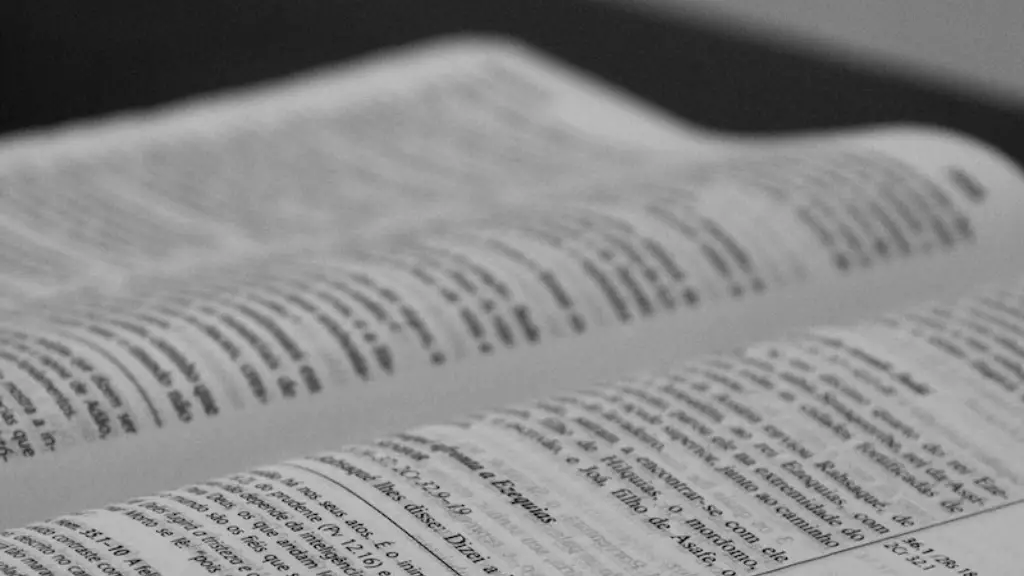Structure in poetry is when a poem is deliberately crafted to create a specific effect on the reader. The structure of a poem is the way its words, phrases and stanzas have been arranged and the relationship between them. The structure is the overall ‘shape’ of a poem and can have a strong effect on how the poem is read and understood by its audience.
When an author is creating a poem, they are not just thinking about what words will create the most beautiful poem, but also how the words they choose, and the way they put them together, will influence how the poem is received. For example, if a poet is writing a poem that is focused on the melancholy of a lost love, they may craft it in a way that leads to a gently sad conclusion or with a strong surge of emotion that leads to a dramatic climax. By using certain structures, a poem can be made to provide the perfect emotion to drive the point home.
It is typically poetry structures that are more formal, but there are also structures that can be applied to free verse. These structures typically refer to specific types of words, phrases, and/or lines that are repeated to create a pattern. By creating patterns and repetition in a poem, it helps give it structure and adds depth to the poem. These patterns can be centered around a single word or phrase, or a set of stanzas. For example, if a poet wishes to replicate a rhythm, they may create a repetitive pattern of rhythmical syllables intentionally to create the desired effect.
The structure of a poem can also draw attention to the meaning of the poem. When a poem has a certain structure it can act to focus the readers’ attention on different parts of the poem. For example, if a poet uses a form of internal rhyme, this will draw attention to the rhyme, so that the reader can pay closer attention to the message being carried by it. Similarly, a certain structure can be used to help tell the story of the poem, drawing attention to where the poem should and should not be looking.
Structure can also help to provide an element of surprise to a poem. A poet can use a structure that allows for unexpected turns, changes in direction, or abrupt shifts that can surprise the reader and help add depth and meaning to the poem. By doing this, a poet can create a unique experience for the reader that can leave them more deeply moved and more invested in the poem.
Overall, structure in poetry is an essential tool that poets use to create and control the effects of the poems they are writing. By carefully choosing words, phrases, and patterns, poets can mold the poem to create the perfect atmosphere and effect for their readers.
What is the importance of structure in poetry?
The importance of structure in poetry is that it helps to create the effect and mood of the poem. By using certain words, phrases and structure, an author can create an atmosphere and emotion that they want readers to experience when reading the poem. This can include creating a sense of beauty, mystery, sorrow, joy or anything else that the author wishes to evoke. Therefore, structure is an essential element of a poem and without it, the poem might be flat or uninteresting.
Structure also helps to focus the readers’ attention on the poem. It helps to ensure that the readers understand the poem by providing structure and direction to the poem as it develops. Through the use of patterns, repetition, and form, a poem’s structure helps to create order and continuity within the poem. This not only helps to lend clarity to the poem but can also help the readers stay engaged throughout.
Finally, structure in poetry can also provide moments of surprise and tension in a poem. By giving the reader an unexpected shift in the poem, the reader can be more deeply moved and engaged with the poem. This can add interesting dynamics to the poem, as well as help the reader better understand the message of the poem.
Writing a poem using structure
Writing a poem using structure is an important skill for a poet to have. In order to write a successful poem, an author must be able to choose the right words, phrases and structures to create the effect they wish to convey. By having an understanding of the structure of different types of poems, an author can shape their poem accordingly and ensure that the poem will have the desired effect.
When choosing a structure, an author should consider the message they wish to convey. If they wish to evoke a certain emotion, the structure of the poem should be crafted so it builds to that emotion. Additionally, the structure should also help focus the reader’s attention on the poem’s meaning. Through the use of patterns, repetition or form, the author can guide the reader’s experience of the poem.
Another important factor in creating structure is rhythm. By using certain rhythms and meters, an author can create a certain sound or feel to the poem. This can help to set the tone of the poem and give it a unique character. Additionally, the use of rhythm can help to draw attention to the poem’s meaning, as readers focus on the sound of the words and pay closer attention to their message.
Finally, it is important to remember that structure is not always necessary. Some poems are more successful without any structure, as having too much structure can hinder the flow of the poem. Therefore, when choosing a structure for a poem it is important to consider if it is necessary for the poem and if it will help to enhance the poem’s meaning.
Modern Examples of Structure in Poetry
Modern poetry often uses structure to convey meaning and create an atmosphere. Many modern poets use certain forms, such as sonnets, to create structure in their poems. Additionally, they also use a variety of other techniques such as repetition, meter, and internal rhyme to help create structure in their poems.
One example is the poem “Ode to a Nightingale” by John Keats. In this poem, Keats uses structure to create a sense of despair and sadness. He uses patterns of assonance, consonance, and alliteration to create a sorrowful atmosphere. Additionally, he uses a terza rima verse form which gives the poem a slow but steady motion. Through the use of structure, Keats is able to create a beautiful, melancholy effect that lingers in the mind of the reader.
Another example is the poem “Paradise Lost” by John Milton. In this poem, Milton uses structure to guide the reader towards moments of revelation, tragedy, and beauty. He does this by using a continual eight-line stanza form and using a pattern of repetition in the poem. Through the use of structure, Milton is able to playfully guide the reader through his complex narrative and slowly uncover the secret at the heart of the poem.
Limitations of Poetry Structure
While poetry structure can be an effective tool to create an atmosphere and guide readers through a poem, it can also be limited. The structure of a poem can be too predictable or restrictive, which can reduce the readers’ engagement with the poem. Additionally, the structure can be too complicated for some readers, making it difficult to understand the poem’s meaning.
Additionally, the structure can also be too restrictive for the poets’ creativity. When an author is too focused on the structure of their poem, they may forget to focus on their message and the creative possibilities of the poem. This can lead to a poem that lacks depth and falls flat.
Finally, structure can also be limited in that it may not be suitable for all types of poems. Some poems may be more effective without any structure, instead relying on the poet’s creativity and the beauty of the words used. This means that while structure is an important tool, it should not be relied upon too heavily when creating a poem.
Conclusion
In conclusion, structure in poetry is an important element to creating a successful poem. By using certain words, phrases and patterns, an author can shape their poem in order to evoke an emotion and drive home their message. However, it is important to remember that structure is not always necessary, and can also be limiting. Therefore, when crafting a poem, an author should consider if the structure they have chosen is necessary and if it will help enhance the poem’s meaning.





